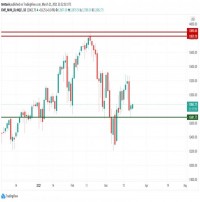|
Opalesque Industry Update - The Global Leveraged Index Fund, a quantitative and global macro strategy fund managed by Coburn Barrett, has a 12 year track record and an annualised return of 14.04% since inception (1/1/1998 – 15/09/2010). The GLI Fund ranks in the top 1% of all funds for total returns according to Bloomberg. Over the same period, it has outperformed the S&P 500 total return index by 11%, the MSCI Global USD total return by 10% and Warren Buffet by 6%. Year to date, the GLI Fund is up 15%; the S&P 500 less than 1%. In stark contrast to any other fund with these returns, Coburn Barrett has never charged a performance fee. Instead it charges a flat 2% management fee. "Flat fees are the best way to ensure alignment of manager and investor interests. Performance fees do not mean higher returns; instead they encourage fund managers to take maximum short-term risk. When a bet is won, they are very well paid, but when the bet is lost, it is the investor alone who carries the loss. We saw this quite clearly and painfully in 2008," said Thomas Wehlen, Founder and Senior Fund Manager at Coburn Barrett. "Returns absolutely matter to investors; but they need to be aware, that performance is not always the primary concern of intermediaries," says Wehlen. "The GLI Fund is unpopular with intermediaries because without a performance fee they do not get paid. We charge a flat fee simply because it means higher returns for the investor." The GLI Fund's investment strategy is a leveraged position in a highly diversified portfolio, setting it apart from traditional index or hedge funds. Like an index fund, turnover is low and it invests in a broad range of liquid securities. Like a hedge fund, leverage is used to increase returns. Seriously large returns need two things, maintains Coburn Barrett: they need to happen over a long period of time and the volatility has to be low enough that an investor can allocate a substantial amount to it. The average life span of a hedge fund is roughly three years, and for mutual funds it is not much longer. The GLI Fund's 12 year track record puts it in the top 10% of all funds for longevity. Coburn Barrett believes that as important as absolute returns, is the volatility, or risk, taken to get there. Unlike other funds, the GLI Fund offers investors a constant level of risk or one consistent level of volatility at all times: approximately 16% downside risk per annum. A proprietary, fixed algorithm determines target risk contributions for different asset classes. Thomas Wehlen continued: "Many funds change their risk exposure significantly over time. This burdens investors with unwanted exposure, and deprives them of opportunities for return. Over the long-term, being out of the market is very often more expensive than being in, and losing. With our strict emphasis on liquid instruments, we have a steady volatility without any smoothing or fudging - what you see is what you get." (press release)
About Coburn Barrett - FG |
Industry Updates
Performance fees enrich managers but hurt investors, says Coburn Barrett
Tuesday, September 21, 2010
|
|





 RSS
RSS







